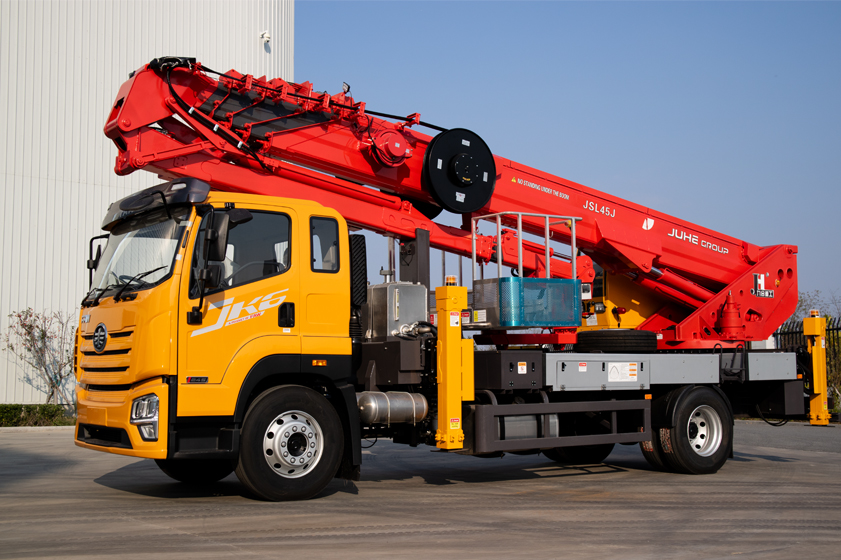News
Basic principles of aerial platform trucks
Jul. 04, 2025
Aerial work vehicles are special vehicles used to carry personnel, tools and materials to the work site and perform aerial work. Aerial work vehicles use a standardized automobile chassis as a walking mechanism to achieve walking (transfer) and carrying functions. In addition to the automobile chassis, in order to achieve the aerial work function, the composition of the aerial work vehicle also includes a power system, a working mechanism, a mechanical structure, a hydraulic and electrical control system, and a safety device.
The power system of an aerial work vehicle generally refers to the energy required to achieve aerial work. Aerial work vehicles usually use the chassis engine as a power source, and part of the power of the chassis engine is taken out through the power take-off system to drive the working mechanism and extension structure of the aerial work vehicle. In this case, the chassis engine, the power take-off device, and the control system for controlling the power take-off device to work or disconnect the power take-off constitute the power system of the aerial work vehicle. In addition to using the chassis engine as a power source, a small number of models use a separate engine or a battery as a power source.
The amplitude of the aerial work vehicle refers to changing the distance between the working platform and the axis of the rotation center, that is, the amplitude. The variable amplitude mechanism of the aerial work vehicle generally uses a hydraulic cylinder to push the working arm to change the angle between the working arm and the horizontal plane to achieve variable amplitude. The retracting mechanism realizes the extension or retraction of the overlapping working arms of the aerial work vehicle, changing the length of the working arm. The working arm is retracted in the basic arm during driving, which does not affect high-speed driving, and is extended to the required length during work. The telescopic mechanism generally uses a hydraulic cylinder with a wire rope pulley group or a chain sprocket group for synchronous extension and retraction. The slewing mechanism is a mechanism set up to achieve the slewing movement of the aerial work vehicle.
The relative rotation movement of one part of the aerial work vehicle (generally refers to the upper part or the slewing part) relative to another part (generally refers to the lower part or the non-slewing part) is called slewing. The slewing range of domestic aerial work vehicles is generally full slewing (rotation of more than 360°). The leveling mechanism is a proprietary mechanism of the aerial work platform, which is used to achieve variable amplitude of the working arm. When the angle between the working arm and the horizontal plane changes continuously, the angle between the working platform and the ground remains unchanged, ensuring that there is no danger of overturning for the staff.
The mechanical structure of the aerial work vehicle includes the working arm, slewing platform, subframe (frame beam, gantry, outriggers, etc.). The extension structure is the skeleton of the aerial work vehicle. It bears the weight of the aerial work vehicle and various external loads during operation. The parts of each working mechanism are installed or supported on these structures.
The hydraulic and electrical control systems are used to realize the movement of the working mechanism, such as the direction of power transmission, the speed of the mechanism movement, and the start and stop of the mechanism. Through the control of the hydraulic drive and electrical system, the start, speed regulation, reversal and stop of each mechanism of the aerial work vehicle are realized, thereby achieving various actions required for aerial work.







